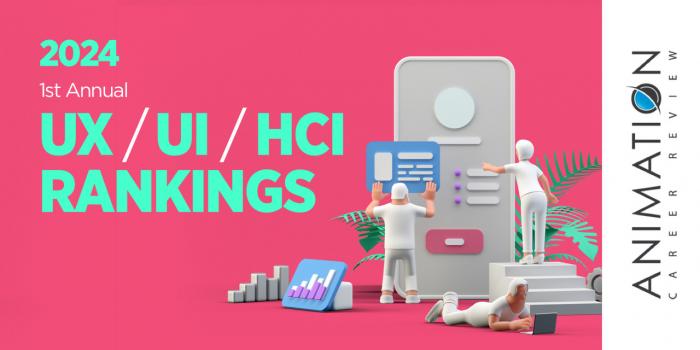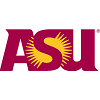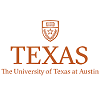
Did you know? The user experience (UX) design program at Savannah College of Art and Design was developed in collaboration with Google. Learn more.

| Ranking | School | State |
|---|---|---|
| 1 | Arizona State University | Arizona |
| 2 | University of North Texas | Texas |
| 3 | University of Texas at Austin | Texas |
| 4 | University of Denver | Colorado |
| 5 | University of Colorado, Boulder | Colorado |
Our 2024 rankings of the Top 5 graduate UX/UI/HCI school programs in the Southwest. For an explanation of ranking criteria, click here.

The College of Integrative Sciences and Arts at Arizona State University (ASU) is home to the Ira A. Fulton Schools of Engineering—the nation’s largest engineering program. Housing eight schools, Fulton provides nearly 50 graduate and 25 undergraduate programs to approximately 31,815 students from all 56 states and nearly 160 countries. Within the Ira A. Fulton Schools of Engineering is The Polytechnic School, which houses the User Experience MS (UX MS) program.
Students in this STEM-designated program will explore the design, development, and analysis of products and services, user interaction, UX research, communication, and content development. Required courses include Cross-Media Design Solutions; User Experience; Usability and User Experience; Fundamentals of Technical Communication; Methods and Tools in Human Systems Engineering; and Foundations of Human Systems Engineering.
Electives allow students to gain knowledge in different areas of UX. Two elective courses are allowed. Examples include Interaction Design, Planning and Implementation; Human Factors in Medical Systems; Content Management and Topic-Based Authoring; Product Design and Evaluation; Global Issues in Technical Communication; and Human Factors in Transportation. Students may also complete an internship.
The UX MS program at Arizona State University culminates with the User Experience Capstone. Students in this final course will create a document and synthesis of the graduate experience.
Graduates of the program are prepared for positions in areas such as User Experience, Human-Computer Interaction, User Research, Interaction Design, Design Research, Interface Design, Digital Visualization Design, Usability Testing, and Human Factors Research.
Thanks to Career Fairs hosted by the Fulton Schools throughout the year, UX MS graduates have the potential to interview with major companies and organizations such as the U.S. Federal Government, Boeing, Microsoft, Amazon, Lockheed Martin, Oracle, Verizon, Cisco Systems, American Express, Honeywell, the U.S. Armed Forces, Deloitte, General Motors, American Airlines, Epic Systems, Intel, Cox Communications, Starbucks, Infosys Limited, Choice Hotels International, eBay, and PayPal.
Arizona State University opened on Feb. 8, 1886 as Territorial Normal School (TNS)—the state’s first higher education institution. On the first day of class, TNS welcomed 33 students to a four-classroom building in Tempe, Arizona. Today, ASU serves approximately 142,635 students from across the U.S. and close to 160 other countries. More than 800 degree programs are provided across four campuses, 16 colleges and schools, and ASU Online. Arizona State University is accredited by The Higher Learning Commission (HLC). Engineering at ASU is accredited by the Engineering Accreditation Commission of ABET.

The College of Visual Arts and Design (CVAD) at University of North Texas (UNT) houses the Department of Design. Within the Department is the only MA with a concentration in Interaction Design (IxD) program in the North Texas region. Established in 2017, the Design MA provides a cross-disciplinary curriculum that explores design, social sciences, logistics, computing sciences, and marketing; hands-on projects with real clients; and the opportunity to interact with industry experts.
Courses for the MA in IxD are taught by experienced professionals in the field. Course examples include Foundations and Frameworks of Interaction Design; Human-Centered IxD; Interaction Design Maker Lab; Data and Information Visualization Design; Processes & Methodology for Innovation; Design Anthropology; and Methods Employed by Design Researchers.
Upon completion of the MA in IxD program at University North Texas, student will have the skills needed to develop human- and humanity-centered systems, services, and products. During the summer semester, students may complete a professional internship. In the final semester of the program, students will complete Interaction Design: Inception-to-Pitch Capstone Project. This is the culminating experience for the IxD MA.
Graduates of the MA in IxD program at University North Texas are prepared to pursue roles such as UX Designer, Creative Director, Information Architect, Experience Designer, Creative Design Lead, Interaction Designer, Organizational Designer, and Publication Designer. UNT CVAD alumni have been hired at places such as BBDO, Nike, Fossil, Walmart, Quanta Magazine, and Pentagram-New York.
Established in 1890 and employing more than 4,600 faculty and staff members, University of North Texas is one of the largest employers in the City of Denton, Texas. The school serves 46,940 students, making it one of the top 10 largest universities in Texas, and one of the largest in the U.S. Students at UNT have access to more than 200 degree options across 14 colleges and schools. University of North Texas is accredited by the Southern Association of Colleges and Schools Commission on Colleges (SACSCOC).

The School of Information at University of Texas at Austin (UT Austin) is a founding member of the International iSchools Organization. This global consortium of 131 universities focuses in education research, and problem-solving in areas such as human-computer interaction, information organization and access, data science, information integrity, and bibliometrics. To date, iSchools has managed 10 projects and initiatives, hosted 18 conferences, and funded 20 grants.
Founded in 1948 And serving approximately 400 students, the School of Information at UT Austin (UT iSchool) provides a variety of programs at all degree levels. Among them is a MS in Information Studies (MSIS) that allows students to customize a plan of study from more than 15 suggested areas. Examples include User Experience (UX) Design; Human-Computer Interaction; User Experience (UX) Research; Human-Centered Data Science; Human-Centered AI and Data Science; and Data Engineering.
The flexible MSIS also allows students to obtain certifications, enroll in a dual degree, and/or engage in cross-disciplinary academic areas through Graduate Portfolio Programs. Students have plenty of opportunities to develop skills in multiple areas thanks to the programs 30 credit hours of electives—out of a total 36 credit hours to graduate. The only core course for the MSIS program is Perspectives on Information.
Electives can come from within or outside the iSchool. Examples of outside electives include Design Thinking (Center for Integrated Design); Data Analytics with Python (Department of Psychology); Introduction to Scientific Programming (Department of Statistics and Data Science); and Designing with Data (Center for Integrated Design).
Students in the MSIS (and all UT iSchool programs) have access to internship opportunities; study abroad experiences; and two labs including the Information eXperience Lab (IX Lab) and the Immersive Human Development Lab. The IX Lab is a state-of-the-art research facility that focuses on HCI, UX, usability, accessibility, and the interactions between humans and information sources.
The Immersive Human Development Lab specializes in the effects of virtual reality and immersive experiences across the lifespan from childhood to adulthood.
In the final year of the MSIS program at UT Austin, students will complete a Capstone. Four options are available including the Professional Experience Project (PEP); Master’s Report; School Library Practicum; and the Master’s Thesis. With the exception of the Master’s Thesis, which is six credit hours split between two semesters, all Capstone Experiences are three credit hours.
Graduates of the iSchool at University of Texas at Austin are prepared for advanced roles and leadership technology, government, business, products and services, education, and more. Top job titles include UX Designer, UX Design Lead, UX Researcher, Creative Director, Analyst, and Data Engineer.
University of Texas at Austin serves approximately 52,385 students, making it one of the largest universities in Texas. Founded in 1883, the school provides more than 155 undergraduate degree programs across 170+ fields of study, along with nearly 240 graduate degree programs—including close to 100 doctoral programs. The academic offerings at UT Austin are housed across 19 distinct colleges and schools. University of Texas at Austin is accredited by the Southern Association of Colleges and Schools Commission on Colleges (SACSCOC).

University of Denver (DU) is home to University College. Serving 3,000 students, this college of continuing studies is also DU’s largest graduate school. Within the College are several career-focused programs for students seeking leadership roles across industries. At the graduate level, University College has master’s degree programs that can be completed in just 18 months. Among the College’s programs are MA degrees in Communication Management; Instructional Design and Technology; and Information and Communications Technology (ICT).
All options allow students to study user experience (UX) through concentration options and/or electives. The Communication Management MA has a User Experience Strategy concentration; the Instructional Design and Technology MA has a concentration in Adult Learning and Inclusive Design; and the ICT MA has a Web Design and Development concentration with heavy UX coursework. Across programs, students can take additional electives from other DU University College graduate programs.
The Communication Management MA with a User Experience Strategy concentration requires completion of 48 credit hours (12 courses) that can be completed in 18 months. Course examples include UX Strategies and Methods; Developing Content for UX; Service Design; UX Team Management; and Marketing Analysis. Storytelling through Research and Applied Critical Thinking in Communication are among the core courses for the MA, while electives range from Brand Management Strategies to Website Design and Management. The Communication Management MA culminates with the Portfolio Capstone.
The Instructional Design and Technology MA with a concentration in Adult Learning and Inclusive Design is also a 48 credit hour program that can be completed in 18 months. Examples of core courses include Strategic Planning for Accessible Learning Design, and Research Practices and Applications. Concentration course examples include Universal Design for Learning; E-Learning: Multimedia Application; and Project Management and Stakeholder Communication.
Popular electives for the program include UX Strategies and Methods; Developing Content for UX; and Evaluating Learning and Development Effectiveness. The Instructional Design and Technology MA culminates with the Portfolio Capstone.
The ICT MA with a Web Design and Development concentration provides hands-on instruction in UX principles, information architecture, and web design. Students in this program will take courses such as Usability Design for Websites; Technology Leadership; and Website Design and Management. Elective examples include UX Strategies and Methods; Enterprise Architecture; Principles of Information Security; Web Graphics Production; and Python Programming.
The ICT MA at University of Denver culminates with a Capstone Project or Capstone Seminar. Like the other MA options, the ICT program requires 48 credit hours (12 credit hours) to graduate, and it can be completed in just 18 months.
Graduates are prepared for leadership roles across industries from education and marketing to technology and web design. Potential job titles include UX Designer, UI Designer, UX Researcher, Creative Director, Information Architect, Experience Designer, Creative Design Lead, Interaction Designer, Organizational Designer, Web Designer, Marketing Manager, and Publication Designer.
Founded in 1864 as the Colorado Seminary, University of Denver is the oldest independent higher education institution in the Rocky Mountain West. The school serves 12,000 students enrolled in more than 220 programs across 12 colleges and schools. University of Denver is accredited by The Higher Learning Commission (HLC).

University of Colorado Boulder (CU Boulder) is home to the Alliance for Technology, Learning and Society Institute (ATLAS). Founded in 1998, ATLAS houses a number of labs and centers dedicated to supporting student work on independent projects. Current labs and centers include the ACME Lab, Living Matter Lab, Center for Media, Arts & Performance, THING Lab, Unstable Design Lab, Laboratory for Emergent Nanomaterials, BTU Lab, and Whaaat!? Lab.
ATLAS also manages the Creative Technology and Design (CTD) program, with core courses taught in the Roser ATLAS Center, and degrees granted through the College of Engineering and Applied Science. For students interested in studying UX-UI-HCI at the graduate level, the CTD program has an MS program with a Creative Industries track. Within the track are two focus areas: UI/UX & Human-Computer Interaction (HCI), and Interactive Product Design and Development.
UI/UX & HCI students have access to selected courses such as User Experience Design; Human Centered Computing Survey and Synthesis: Foundations and Trajectories; Interface Aesthetics; Universal Design for Digital Media; Front-End Web Development; Human Centered Computing Survey and Synthesis: New Disciplinary Directions; Mobile App Development; and Web Creative Development Tools.
The Creative Industries track provides access to selected courses such as User Experience Design; Soft Interactive Objects; Product Development Studio; and Wearable Technologies.
Across tracks, students benefit from small, hands-on, project-based classes; courses taught by professionals from places such as Amazon and Google; visiting speakers, guest lecturers, and roundtables; project mentoring and collaborations; and studios and workshops that provide the opportunity to work directly with industry professionals on real-world issues.
ATLAS CTD workshops are free and may include topics such as UI/UX, Figma, Programming in Python and R, Motion Graphics, Adobe Creative Suite, and Project Management.
All ATLAS CTD students also benefit from networking events and portfolio development activities. The Creative Technology and Design MS culminates with the Creative Industries Thesis Project. At the end of the semester, students will formally present these final works to the ATLAS community.
Graduates of the CTD Programs at University of Colorado Boulder work in areas such as Art and Entertainment, Technology, Education, Healthcare, and Sciences. MS graduates also work in research across all industries and in many departments and agencies of the U.S. government. CU Boulder graduates have been hired by companies and studios such as Lockheed Martin, Google, Hitachi, IBM, Walt Disney, CBS Studio Center, Starz Entertainment, Panavision, Ball Aerospace & Technologies Corp., and Medtronic.
Founded in 1876 (the same year Colorado joined the Union), University of Colorado Boulder is the flagship university of the four-campus University of Colorado System. One of just 35 public research institutions in the U.S. in the Association of American Universities (AAU), CU Boulder serves approximately 36,120 students, making it the largest of CU System.
More than 90 degree programs and 3,600+ courses are provided across eight colleges and schools, Continuing Education and Professional Studies, and several Centers. University of Colorado Boulder has been accredited by The Higher Learning Commission since 1913.